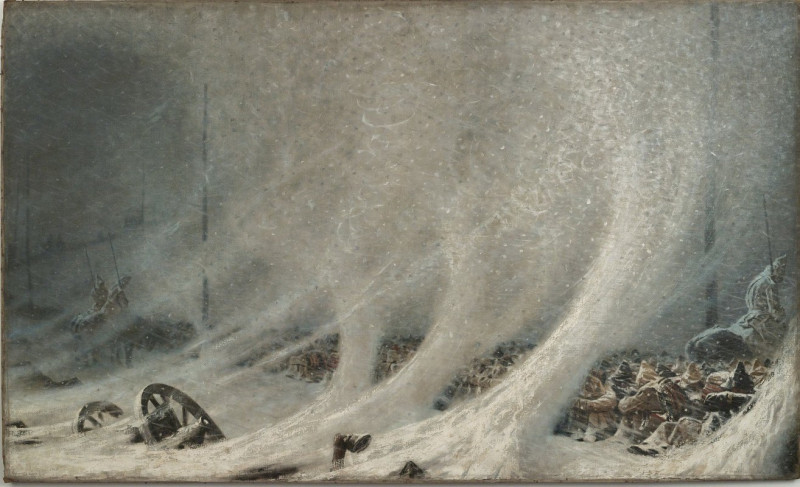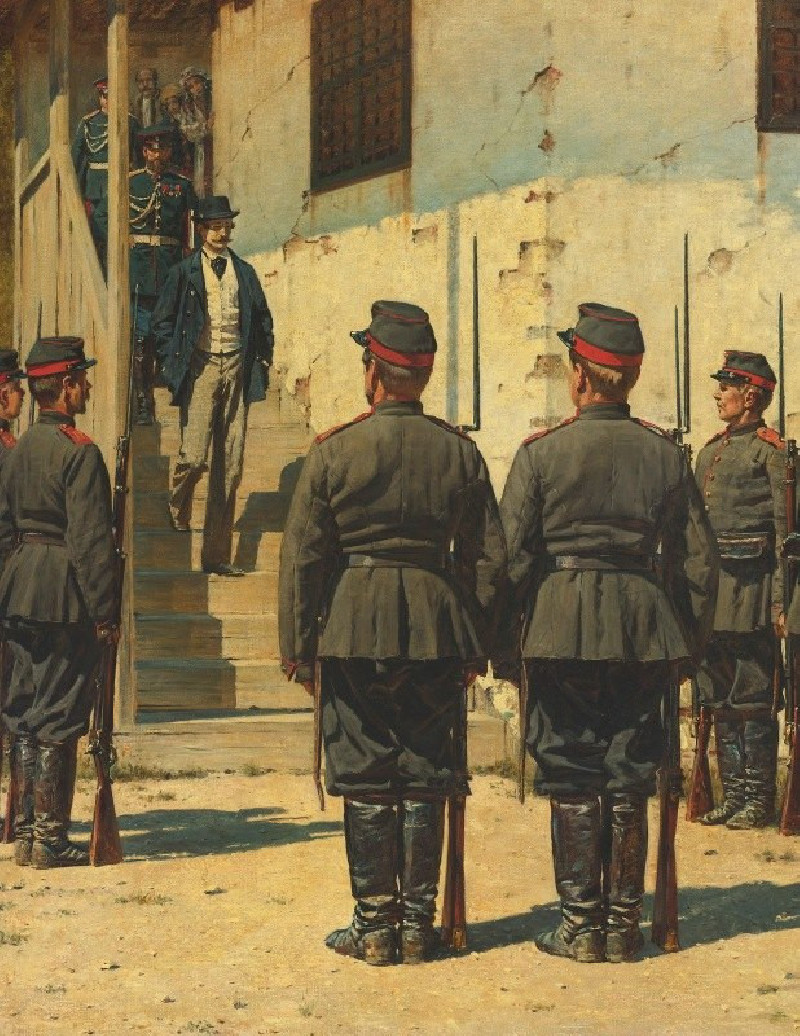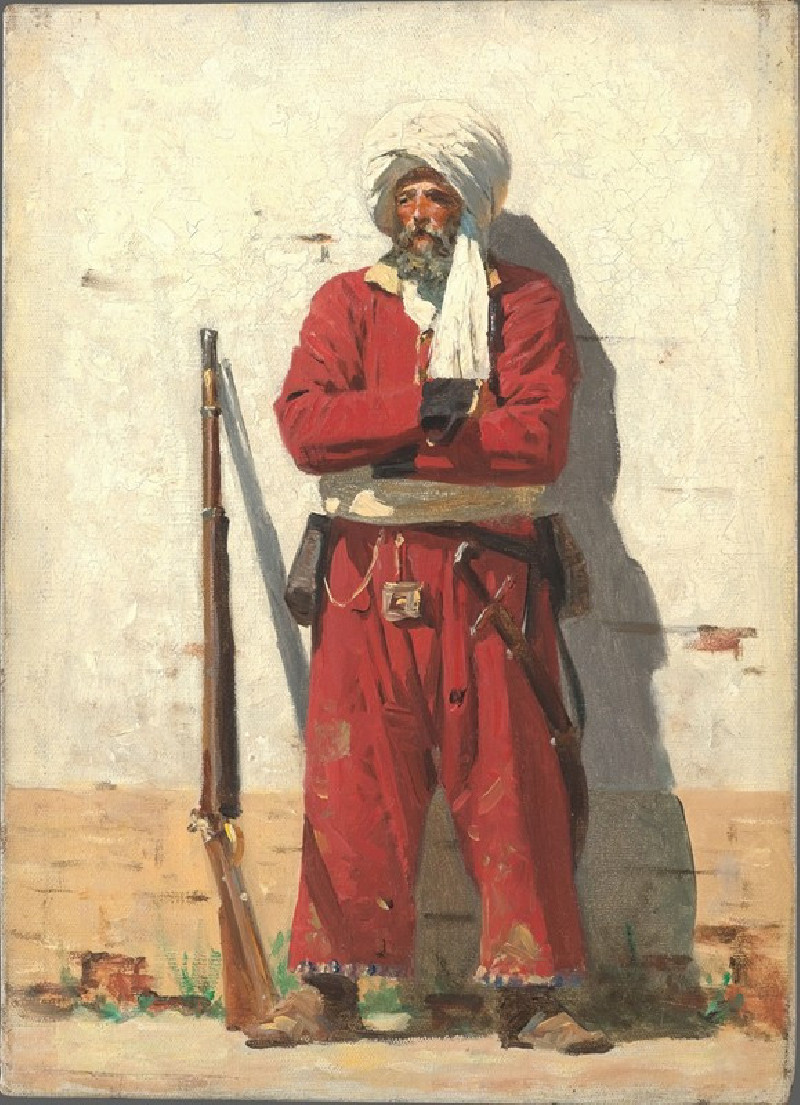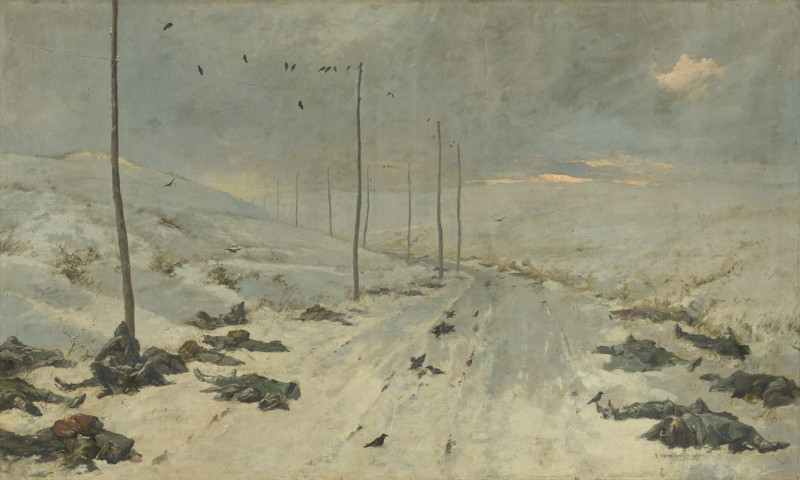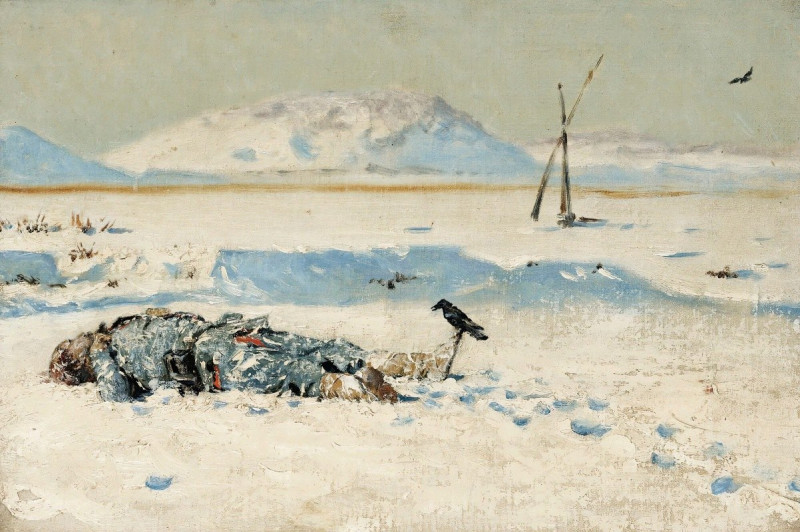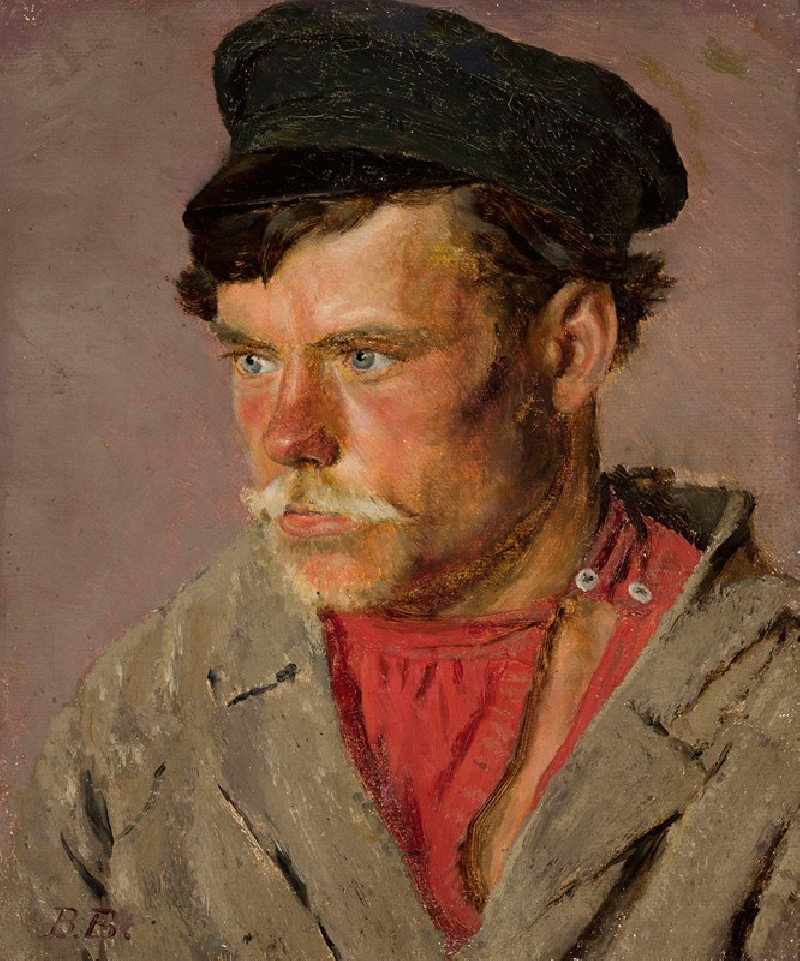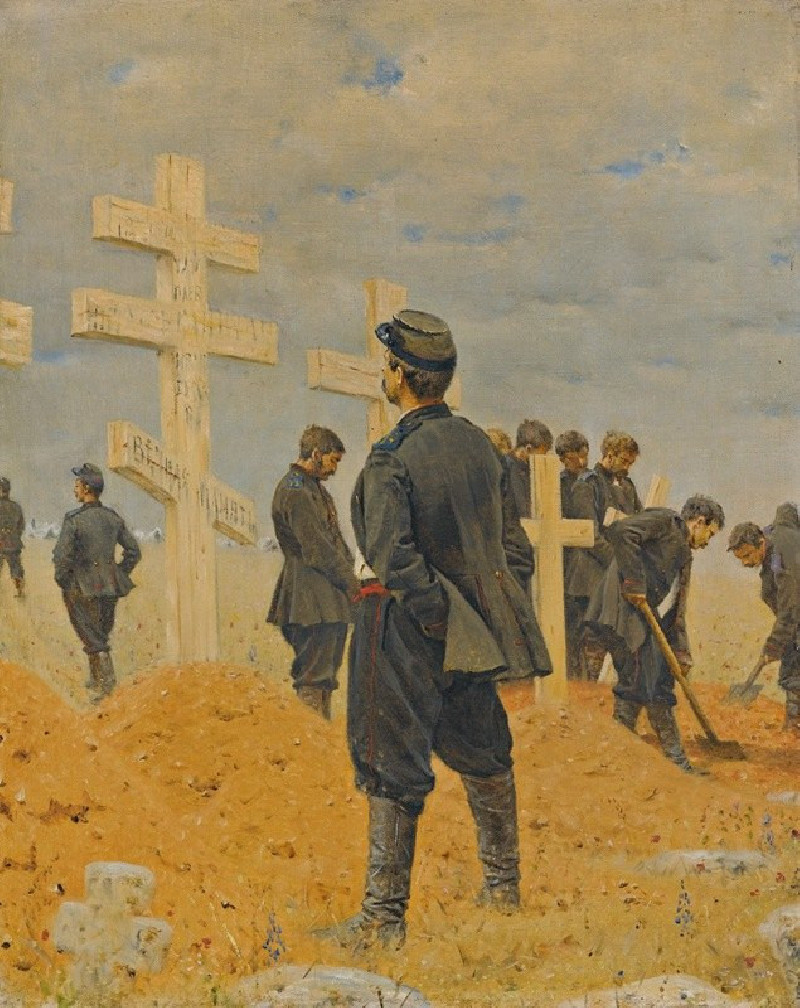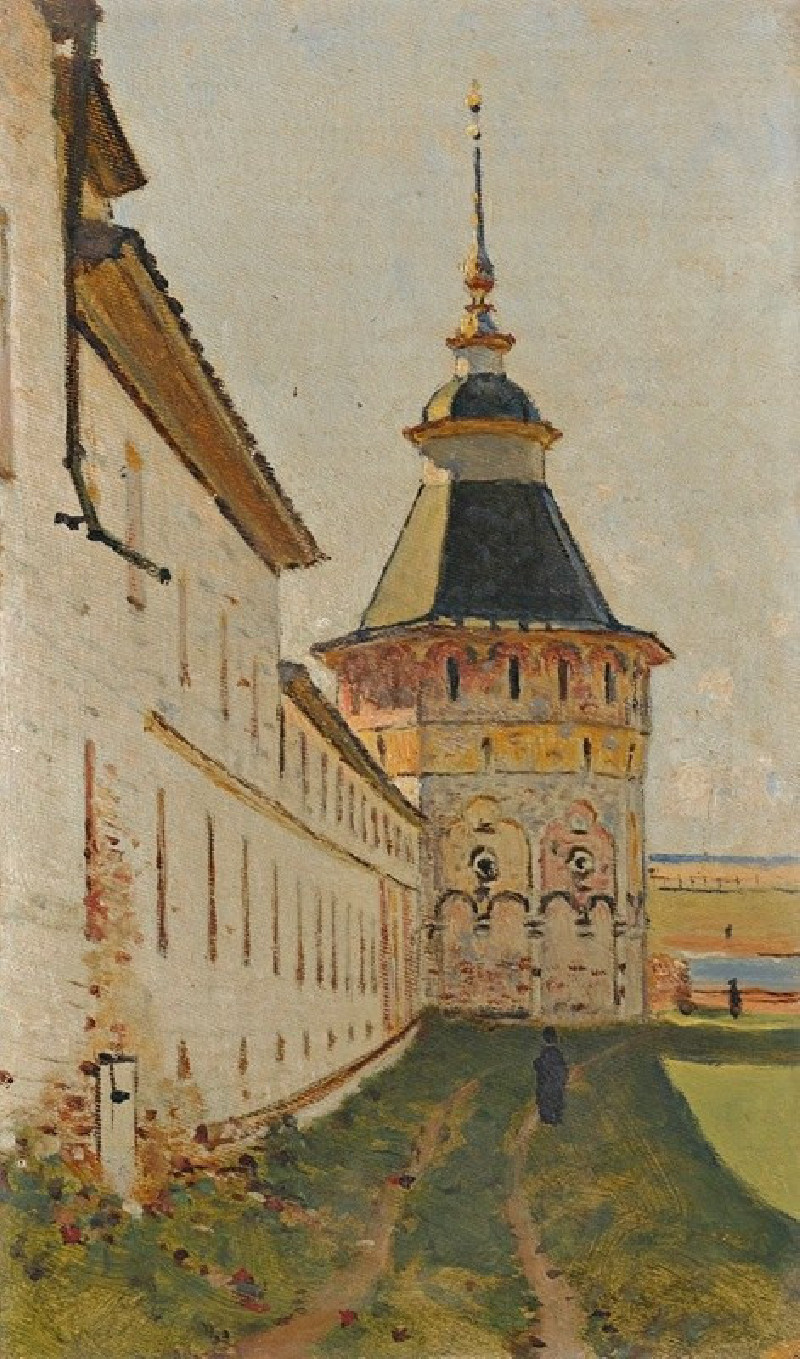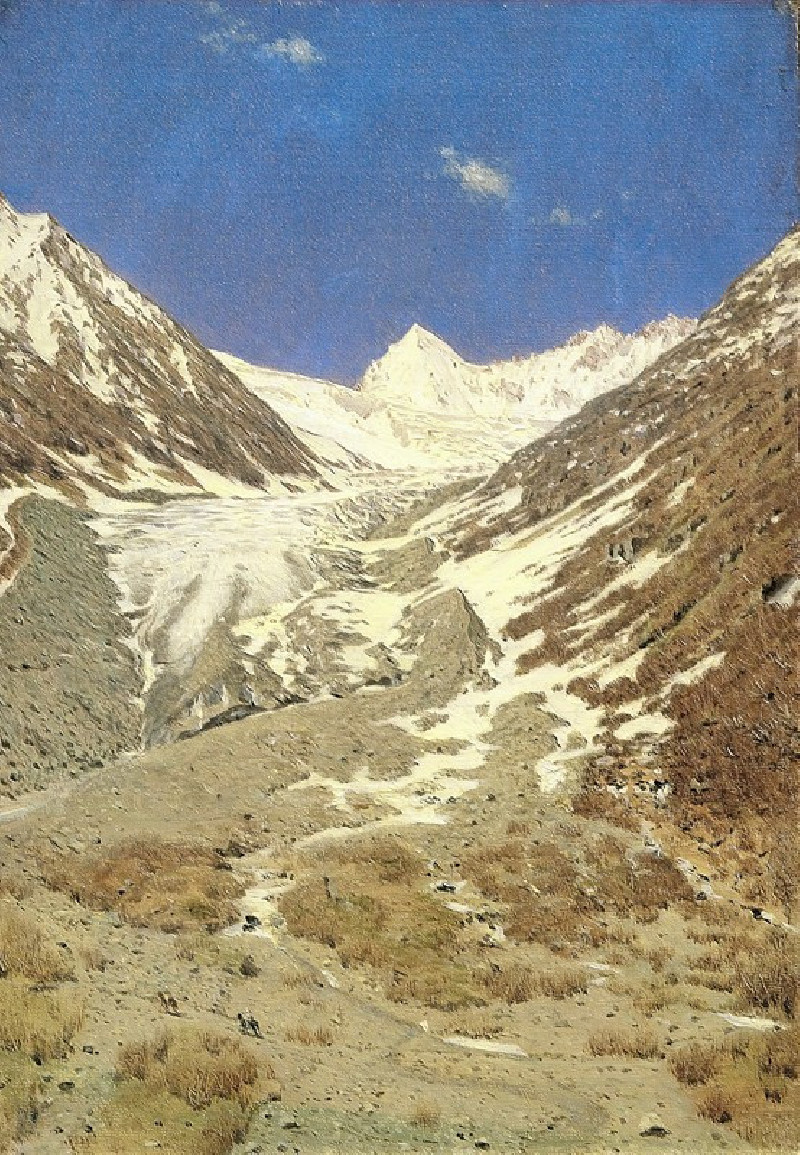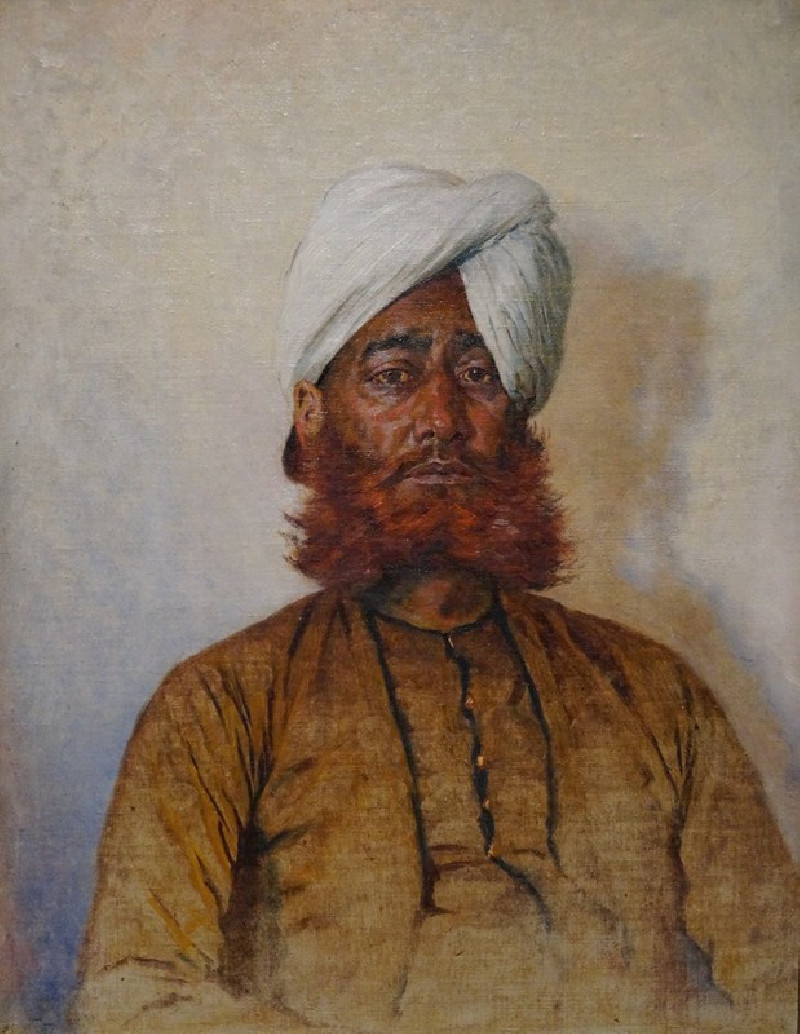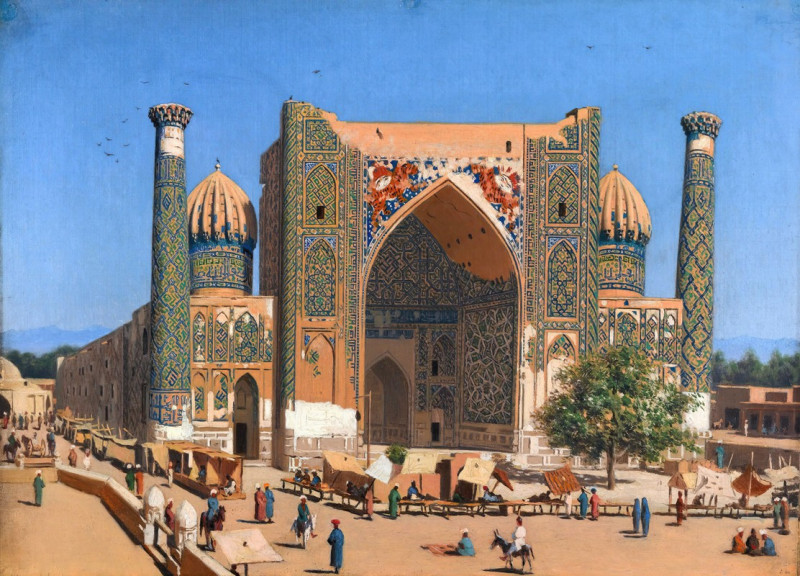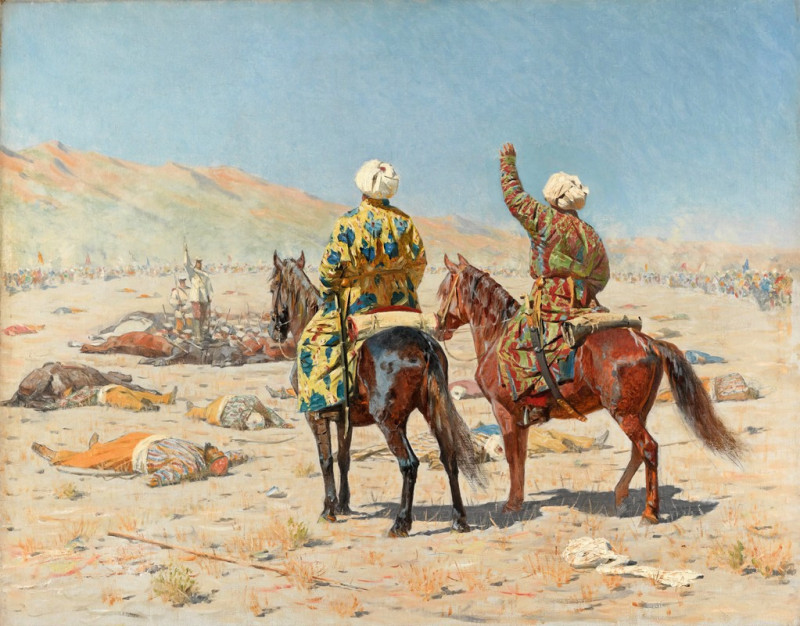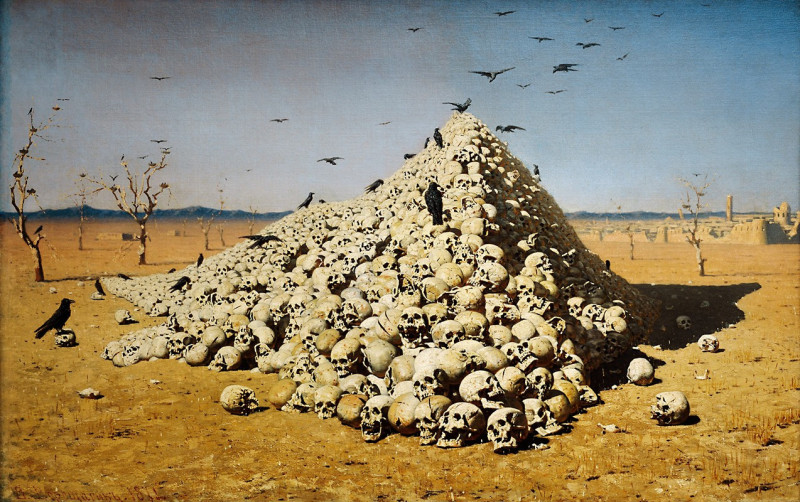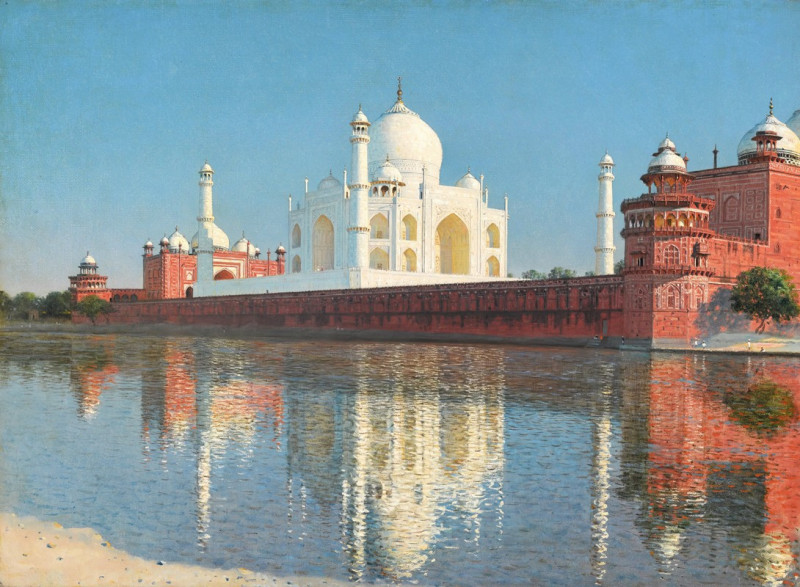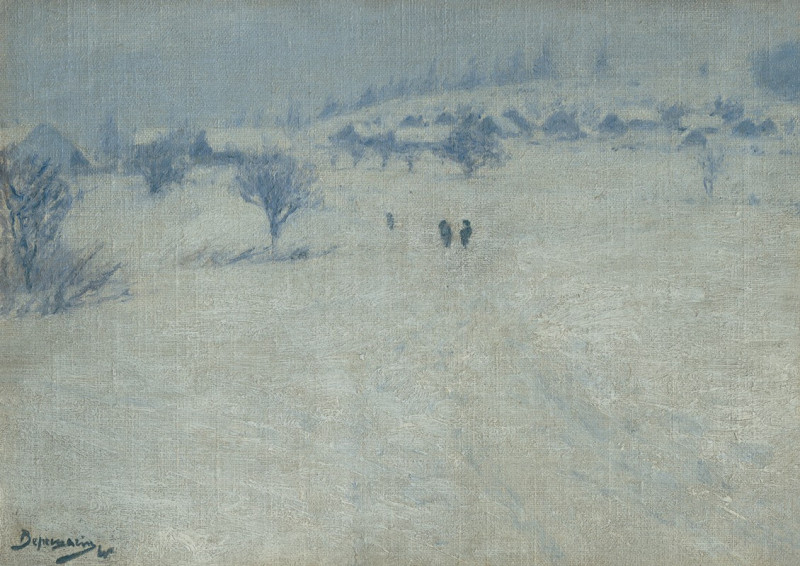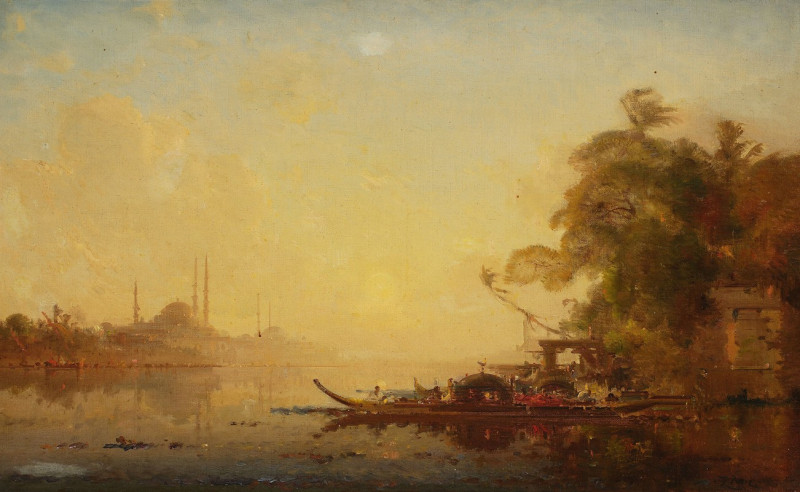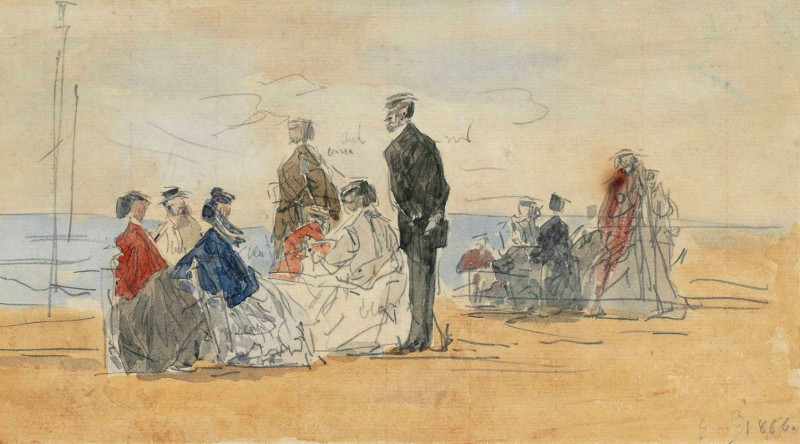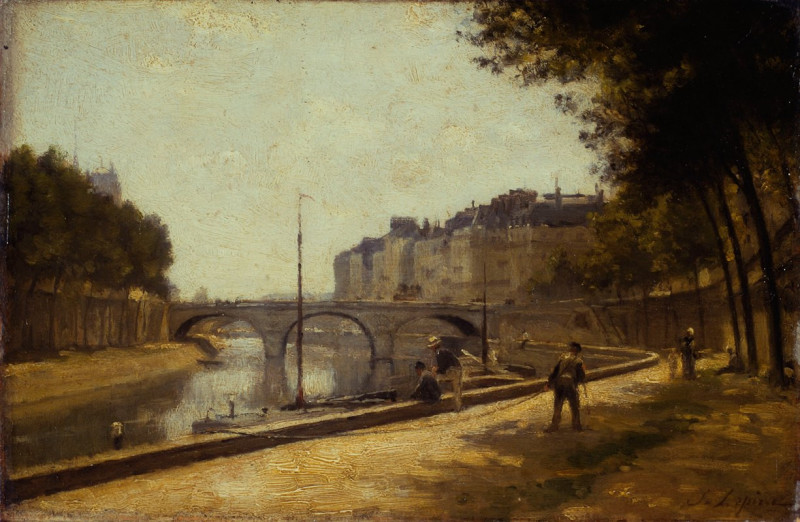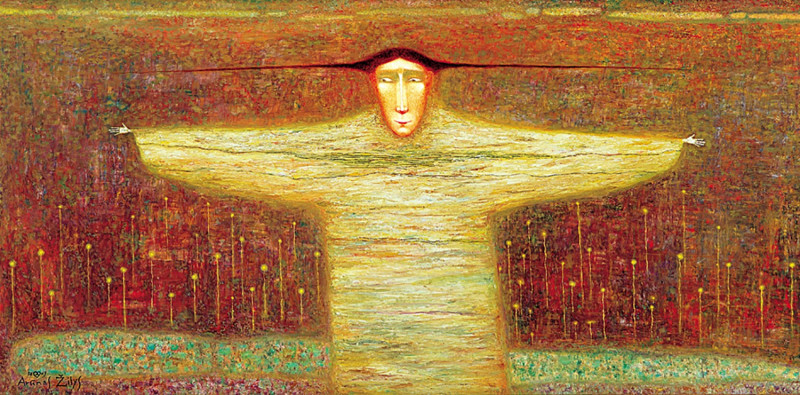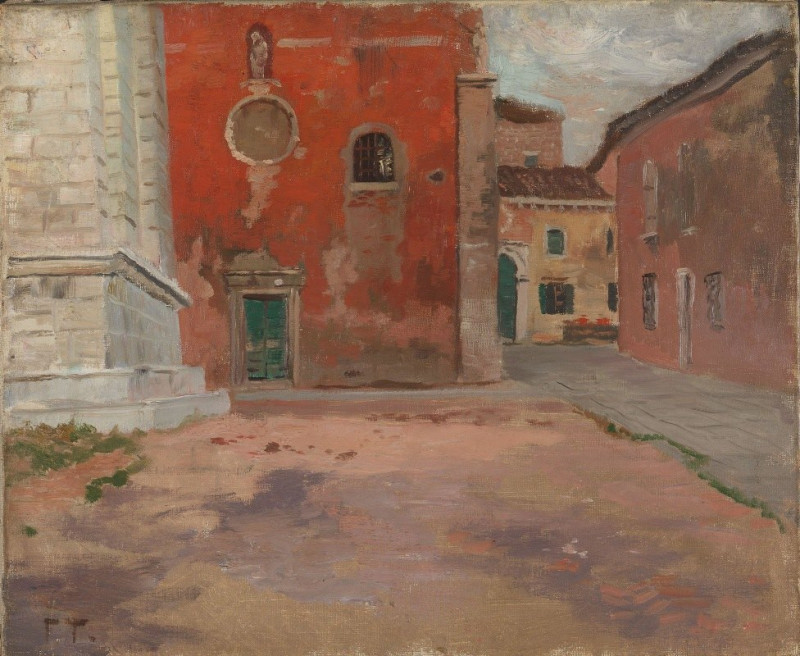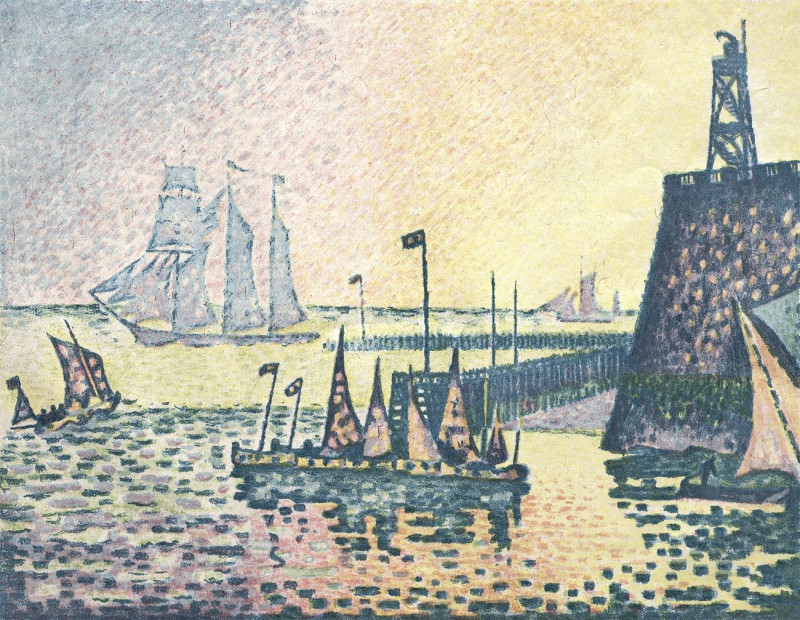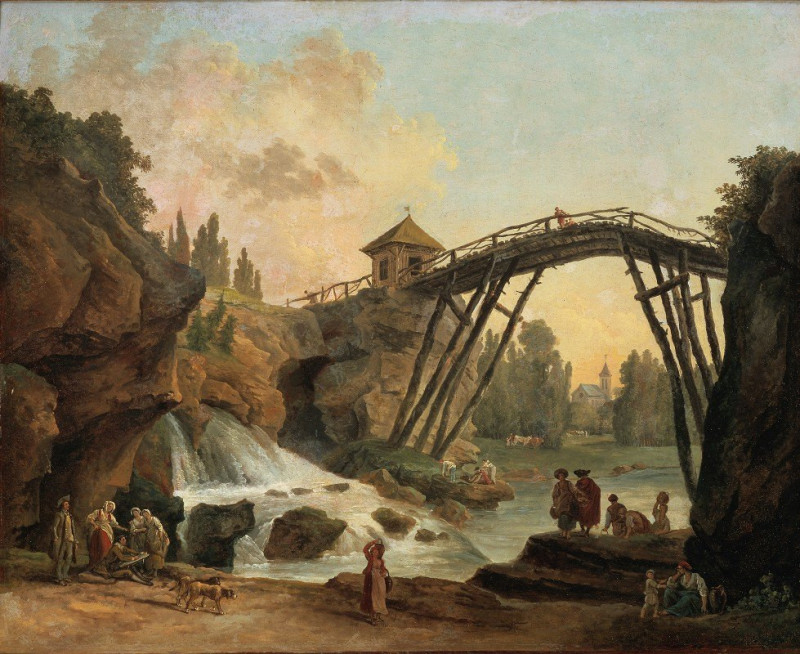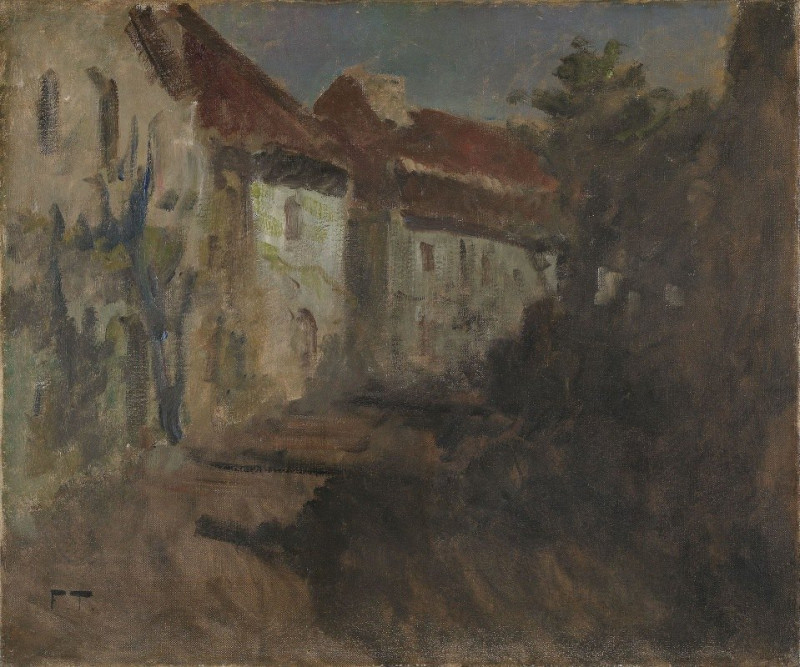A Resting Place of Prisoners
Technique: Giclée quality print
Recommended by our customers
More about this artwork
In the evocative artwork "A Resting Place of Prisoners" by the renowned Russian artist Vasily Vereshchagin, the viewer is thrust into a chilling scenario of war’s grim reality. This powerful painting captures a bleak, frozen moment in the lives of prisoners enduring the harshness of a snowstorm. The canvas is dominated by stark, icy tones that convey the biting cold and the swirling snow that engulfs the scene.Vereshchagin's skillful use of muted colors and dynamic brushstrokes creates a sense of movement and desolation, emphasizing the brutality of the prisoners' environment. The figures, scarcely discernible under their heavy, snow-laden cloaks, are portrayed amidst remnants of broken wagons and barren trees, their forms almost merging with the icy landscape. This blurring of forms serves not only as a depiction of the storm's force but symbolically reflects the loss of identity and humanity in such extreme conditions.Through this haunting depiction, Vereshchagin communicates a profound commentary on the cruelty of captivity and the universal suffering of war. "A Resting Place of Prisoners" is not only a testament to the artist’s masterful handling of atmosphere and emotion but also a powerful historical document that compels the viewer to reflect on the darker aspects of human history.
Delivery
Returns
Vasily Vasilievich Vereshchagin was one of the most famous Russian war artists and one of the first Russian artists to be widely recognized abroad. The graphic nature of his realistic scenes meant that many of them were never printed or exhibited.
Vereshchagin was born in Cherepovets, Novgorod province, Russia, in 1842. the middle of three brothers. His father was a noble landowner, and his mother had Tatar roots. When he was eight years old, he was sent to Tsarskoe Selo to join Alexander's cadet corps. Three years later, he joined the Marine Cadet Corps in St. Petersburg and made his first voyage in 1858. Served in the frigate "Kamchatka", which sailed to Denmark, France and Egypt.

